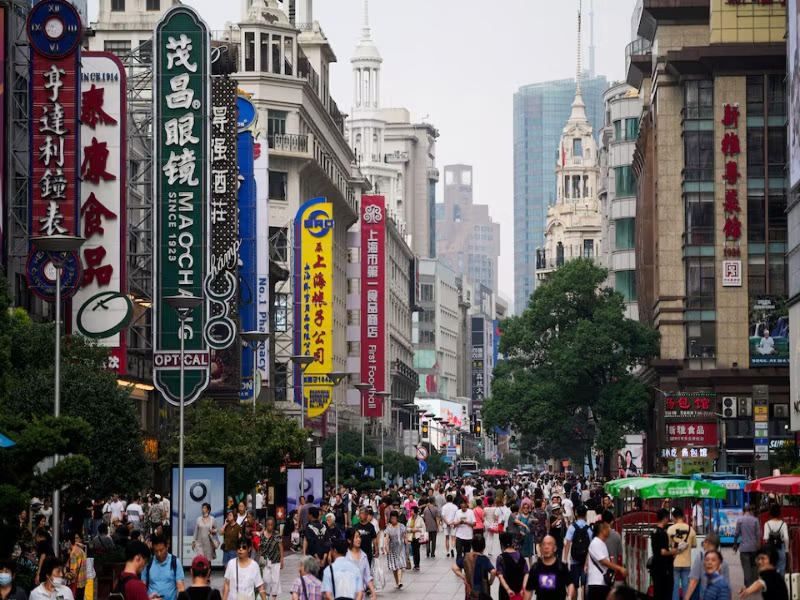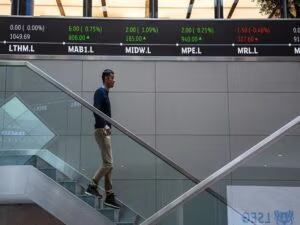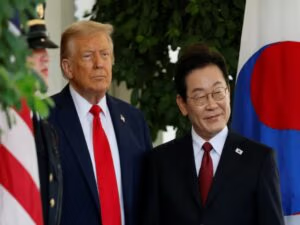The slowdown in China worsened in October, pulled down by weak consumer demand, a deteriorating property market, and the long holiday season, which further impaired factory activity.
Data released by the National Bureau of Statistics indicated on Friday that fixed-asset investment, which includes real estate, dropped by 1.7 percent during the first ten months of the year, accelerating in comparison to the 0.5 percent decline in the January-to-September period.
Therefore, the analysts surveyed by Reuters had predicted a decline of 0.8 percent. According to data going back to 1992 from Wind Information, a private database focused on the country, informed that China reached a contraction in fixed-asset investment in 2020, during the last time during the pandemic.
The Goldman Sachs estimates reported that on a single-month basis, fixed-asset investment declined by 11.4 percent from a year, the weakest reading since early 2020, when the first Covid lockdowns affected.
However, the bank claimed that the decrease in efforts of Beijing to curb industrial overcapacity and the decline in the housing market.
In that segment, property investment remained down, falling by 14.7 percent in the year through October, compared to a 13.9 percent decline in the first nine months.
Manufacturing investment increased by 2.7 percent, and utilities expenditure, including electricity, fuel, and water supplies, increased by 12.5 percent.
Industrial output increased 4.9 percent in October, compared with 6.5 percent the previous month, missing expectations for a 5.5 percent increase.
The manufacturing activity of China declined unexpectedly and more than forecasted in October, reaching its lowest point in six months, which was a weeklong holiday that held from October 1 to October 8, which closed most of the factories throughout the country. Retail sales increased by 2.9 percent in October compared to a year ago.
LSEG data stated that although it exceeded the 2.8 percent growth prognosis in a Reuters survey, the consumption indicator decreased in its fifth consecutive month to the lowest point in 2013.
The survey-based urban unemployment rate dropped to 5.1 percent last month, as compared to 5.2 percent in September.
President and Chief Economist of Pinpoint Asset Management, Zhiwei Zhang, said that the decline in fixed-asset investment was by far anchored by poor performance of investment in the property sector and infrastructure.
In a note, Principal Economist of the Conference Board’s China Center, Yuhan Zhang, stated that manufacturing investment has witnessed “modest and uneven growth,” with state-owned enterprises raising spending on infrastructure, like electricity, heat, and gas supply, while foreign investment contracted sharply.
He further added that “We will continue to see policy-directed investment in infrastructure, advanced manufacturing, and industrial upgrading.”
Official data stated on Friday that, in an indication of incessantly low demand in the damaged housing industry, which has recorded that new home prices in China had dropped 0.5 percent in October from the previous month, the sharpest decline month-on-month since October last year.
Prices of homes decreased by 2.2 percent in October on an annual basis. The LSEG data shows that consumer prices increased 0.2 percent in October, the highest inflation rate since January this year and the first positive growth since June.
According to data provider Wind Information, the core CPI, which excludes food and energy, increased by 1.2 percent compared to a year ago, the biggest increase since February 2024.
The exports of China in October have surprisingly been in a contraction form in almost two years since the escalation of the tension between China and Washington over the trade issue, before a deal could be signed towards the end of the month.
Last month, U.S. President Donald Trump and Chinese leader Xi Jinping agreed to cut both sides of their tit-for-tat tariffs and suspend a host of restrictive measures for one year.
Economists generally believe that as front-loading activity by businesses decreases, global demand may not be sufficient to counter a more pronounced decline in U.S.-bound shipments, placing Beijing under further pressure to boost domestic demand.
Zhang added, noting “I don’t expect stimulus to happen in the rest of this year,” that the economy seems to be on course to meet its 5 percent growth target, but that fiscal policy might become more accommodative at the beginning of next year.
The economic growth rate of China declined to 4.8 percent in the third quarter after it had increased to 5.2 percent in the second and to 5.4 percent in the first quarter.






